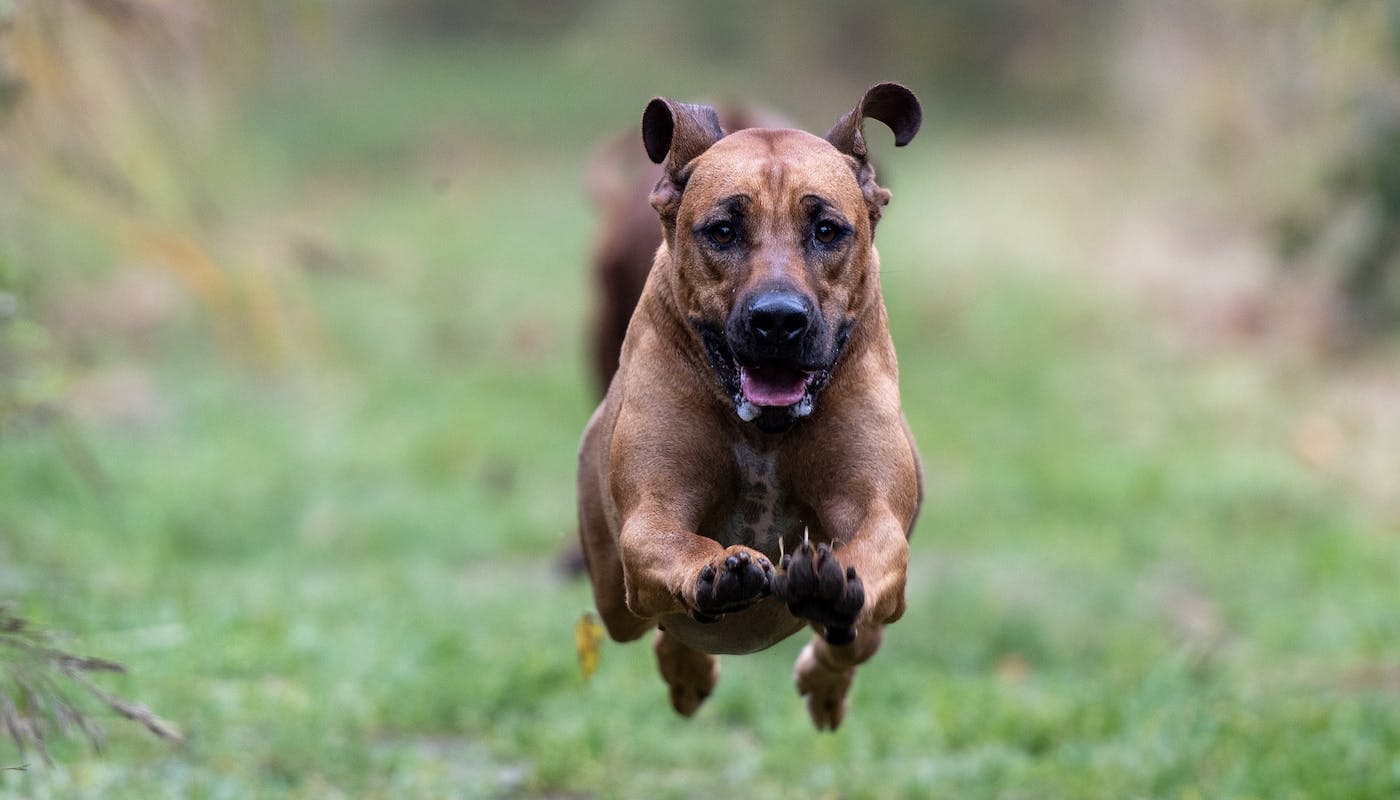Can I Reduce My Dog’s Prey Drive?
Over the years, dogs have been bred to work, hunt, and provide companionship for their owners. These traits are in their biology and are often part of their charms! However, sometimes a strong prey drive can cause behavioral issues – here’s how to manage it.
What is Prey Drive?
It’s your dog’s instinct to pursue and kill prey. It is present in many dogs, and some have a stronger instinct than others.
The prey drive is seen in five different behaviors:
- Searching. They use their strong sense of smell to find and follow prey. Some dogs are incredible trackers (Foxhounds and Bloodhounds are two examples).
- Stalking. Like cats, some dogs instinctively ‘stalk’ creatures which constitute prey. They will be low and stealthy in their approach.
- Chasing. It’s instinctive to almost every dog: they can’t resist a fast-moving object and will give chase.
- Retrieving. Dogs like spaniels will chase and return objects to you, which is related to hunting in a pack.
- Biting. A firm bite reveals the dog’s intent to kill. (Nips are more likely their way of issuing a warning.)
Which Dog Breeds Have the Highest Prey Drive?
The prey drive is more prevalent in dogs which were bred to hunt or flush out prey.
Their prey drive once helped them to be keen and useful hunting companions. Spaniels were often used to hunt or retrieve birds, while Beagles and Labradors usually accompanied game hunters. But many other breeds – from Pointers to Spitzes – had hunting in their history.
Did you know that some dogs were bred to hunt particular species? For example, the tunnel-shaped Dachshund was originally bred to chase badgers. The Norwegian Lundehund was specially reared to hunt puffins. Its paws are adapted to enable it to climb rocks in search of nests!
Humans have used the prey drive from some animals for their own benefits. Greyhounds are naturally very fast and being sighthounds gives them a good sense of sight. By training them to chase after a lure, their prey drive is activated and they run. Although most states have now banned greyhound racing, any hound that used to race, can still be prone to chasing after anything that triggers their prey drive.
Of course, these days very few dogs accompany their owners on a hunt. So their prey drive is usually dormant – until they see a squirrel or a crow.
How Can You Handle Your Dog’s Prey Drive?
Playing ‘fetch’ or tracking animals on a walk is OK. But sometimes, a strong prey drive can lead to behavioral problems. You won’t be able to (and probably shouldn’t) amend your dog’s personality; but training can offer your dog an alternative outlet for their urges. Here are some tips for managing your dog’s prey drive.
- First, get to know the way that your dog’s prey drive manifests. They might find rodents irresistible; some become obsessed with birds. Knowledge is key to help you retrain your dog.
- Recall is vital. If your dog runs off-leash, they could cross roads and run into traffic while pursuing prey. Train them in recall and ensure they are consistent before letting them off-leash. If they’re not consistent, keep them on a leash in any public place.
- If children are present, your dog should be supervised at all times. Many of us like to think that our dogs are safe with children, but it is wise to remain cautious. The same goes for any other dogs - an off leash dog should never be allowed to approach a leashed dog without checking with the owner first.
- Redirect that prey drive into another activity. A dog with a subtle prey drive might enjoy playing with prey-shaped toys, shaking them around to stun them.
- Is your dog more intense? Train them to channel that energy into a game like ‘fetch’ or enroll them in a flyball or lure-coursing class.
In some cases, the prey drive is just part of who they are. Whether you’re buying a puppy from a breeder or adopting from a rescue center, make sure you know everything about the breed you’re taking on. In some cases, the rescue center or breeder might advise they’re never let off leash or they might need to be muzzled. Don’t let this put you off, so long as your dog is loved and well cared for, they’re not going to mind walking on a leash or wearing a muzzle. It’s just going to be something they associate with going out on adventures with their favorite human!
